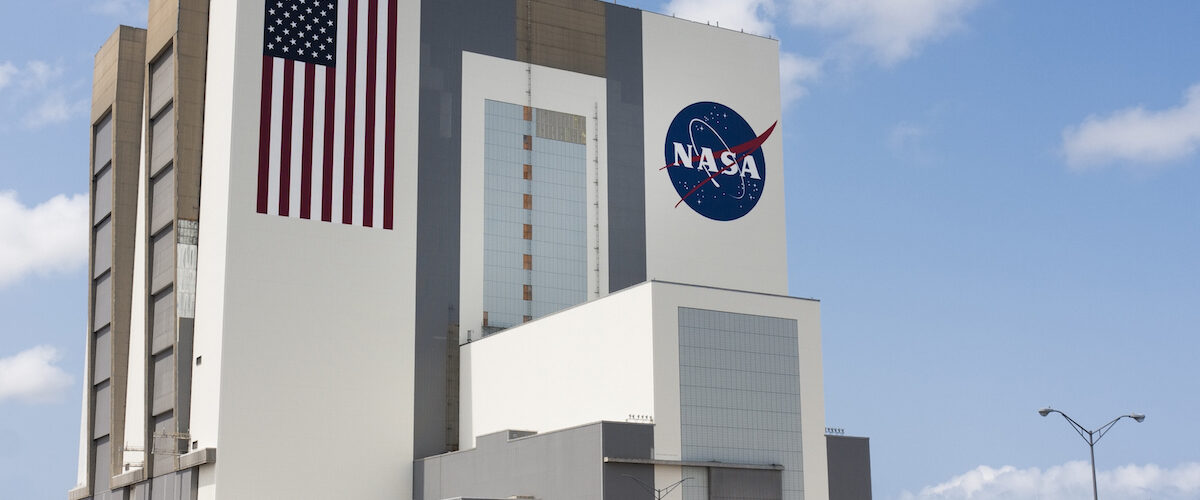If you were asked to name key players in the aerospace industry, odds are you would list SpaceX, Blue Origin, Virgin Galactic, Boeing, Lockheed Martin, NASA and a few others. I doubt you would include the University of Central Florida. You should. It is no coincidence the 50-yard line of UCF’s football stadium lines up on the exact latitude as NASA’s historic Launch Complex 39A.
UCF was birthed following President John F. Kennedy’s famous “Moon Shot” speech in 1961 stating the goal “before this decade is out, of landing a man on the moon and returning him safely to the Earth.” The original proposed name for UCF was “Space University.”
Universities are in the business of doing three things: teaching, research and service. Out of countless examples of UCF’s contributions to space, here are just a few.
Teaching at UCF
UCF students make important contributions through internships, co-op programs, senior design projects or research with faculty members. Others make their mark after they have graduated.
- Two alumni are astronauts: Fernando “Frank” Caldeiro and Nicole Stott, who spent 91 days on the International Space Station.
- Alum and former Google senior vice president of engineering Alan Eustace set the world free-fall record in 2014 by descending 26 miles from the stratosphere sometimes at speeds of 822 mph. That experiment created new technologies for stratospheric exploration.
- For six consecutive years, we have been ranked by Aviation Week Network as the top workforce supplier to the aerospace and defense industries.
- About 30% of Kennedy Space Center employees are UCF alumni.
- Mechanical engineering graduate student Leigh Nash was one of only 10 students awarded an Advanced STEM Training and Research Fellowship from NASA. The fellowship enables her to work with researchers at NASA’s Glenn Research Center on aviation fuel. She has created new optical techniques to more accurately characterize properties of the fuel, leading to ways to dramatically improve performance.
UCF Research
UCF’s first research grant was from NASA in 1968. There have been hundreds of space research projects since then.
- A UCF experiment was the very first to fly aboard the inaugural flight of Blue Origin’s New Shepard spacecraft. In 2019 alone, UCF experiments flew to space five times aboard SpaceX’s Falcon 9, Blue Origin’s New Shepard, and Virgin Galactic’s SpaceShipTwo. A number of those experiments were to study space dust — how it behaves, builds up to form planets and rings around planets, and affects objects and instruments in space and on the surface of the moon.
- A UCF team and the U.S. Air Force Research Lab have developed a rocket-propulsion system that had long been thought impossible. The rotating detonation rocket engine dramatically improves efficiency to generate more power while using less fuel. This means rockets will be lighter, travel farther and burn fuel more cleanly.
- The Center for Lunar and Asteroid Surface Science at UCF develops and makes synthetic soil closely imitating that on Mars, asteroids and the moon. Products that faculty and students produce are used by hundreds of scientists worldwide to simulate soil impact on engines and instruments during their development and testing before being sent to space.
- UCF’s Materials Science faculty and students are working with NASA to develop a process for building structures on Mars with 3D printing. They have developed a process to extract metals from Martian soil and then use those metals in a 3D printer to make parts to build structures.
- The National Science Foundation tasked UCF with managing the Arecibo Observatory facility in Puerto Rico. The second-largest single-dish radio telescope in the world, Arecibo operates 24 hours a day on behalf of NASA and other agencies tracking planets and asteroids, searching for life elsewhere, and constantly expanding our understanding of the solar system.
Service to the Community
Service to the community takes many forms, including STEM education and support of innovative companies impacting the economy.
- UCF PhD graduate David Reid started Helicon Chemical Company to continue his groundbreaking work in synthesizing chemicals. The company has created new propellants and rocket fuels, one of which is being used by Rocket Crafters in its 3D printed rocket engine for commercial space use.
- Following the discovery by UCF and NASA researchers of a color-changing adhesive tape that detects hydrogen leaks, UCF chemist Nahid Mohajeri started HySense Technology to commercialize the product. Three years later, the company was acquired by Nitto Denko, which sells the product globally to multiple industries.
- Former aerospace engineer Sergie Albino formed ecoSPEARS, today a global company, around a NASA invention to treat PCB-contaminated sediments in the ground, eliminating the need to remove, treat and restore soil.
For these reasons and countless more, some say the inaugural SpaceX launch should have had a bumper sticker reading “If you are on board, thank a UCF graduate.” UCF’s founding motto was “Reach for the Stars.” Our hometown university is still doing just that.
Carol Ann Dykes Logue is co-director of the University of Central Florida’s Innovation Districts and Incubation Program, working with innovative companies solving problems on Earth and beyond.
